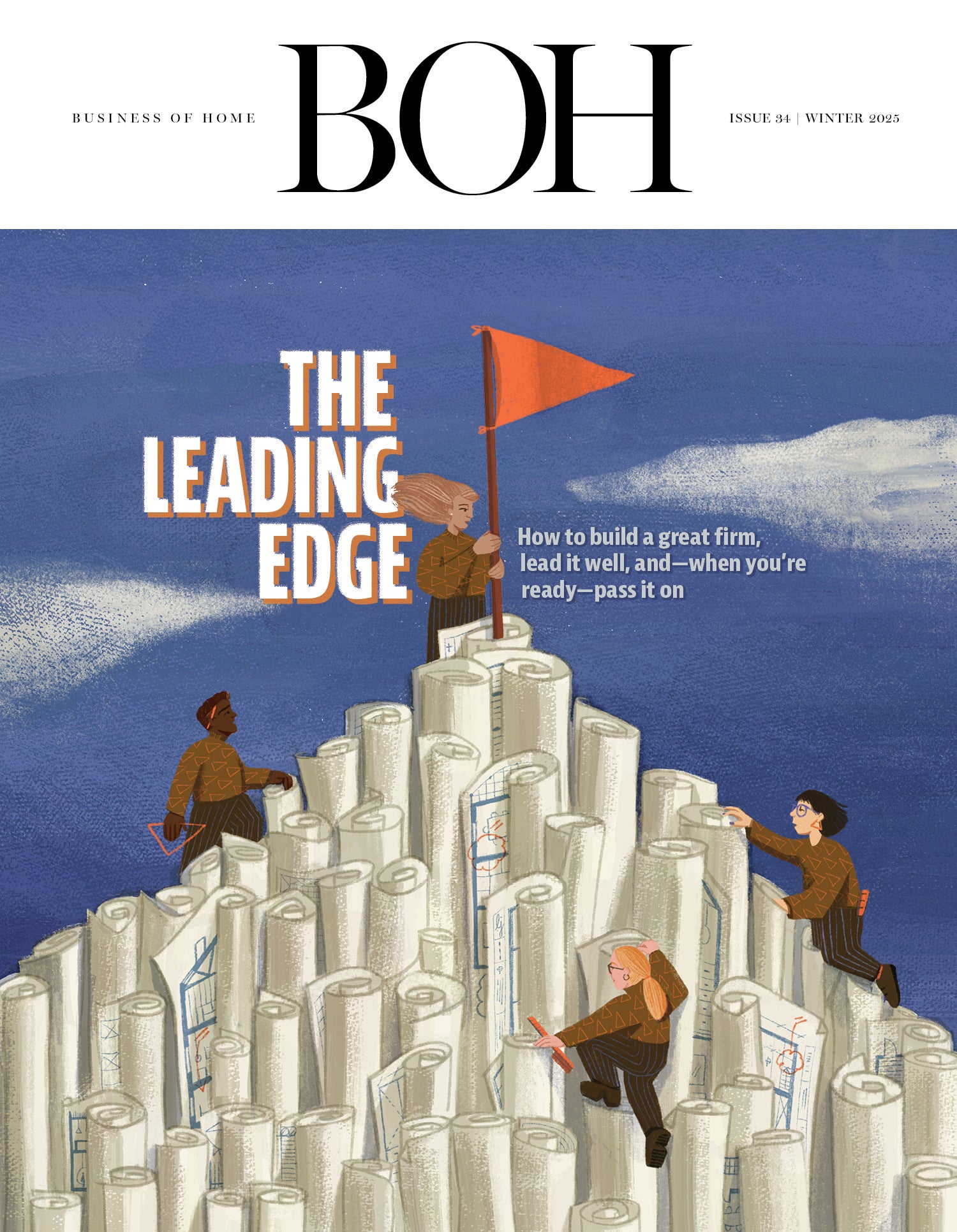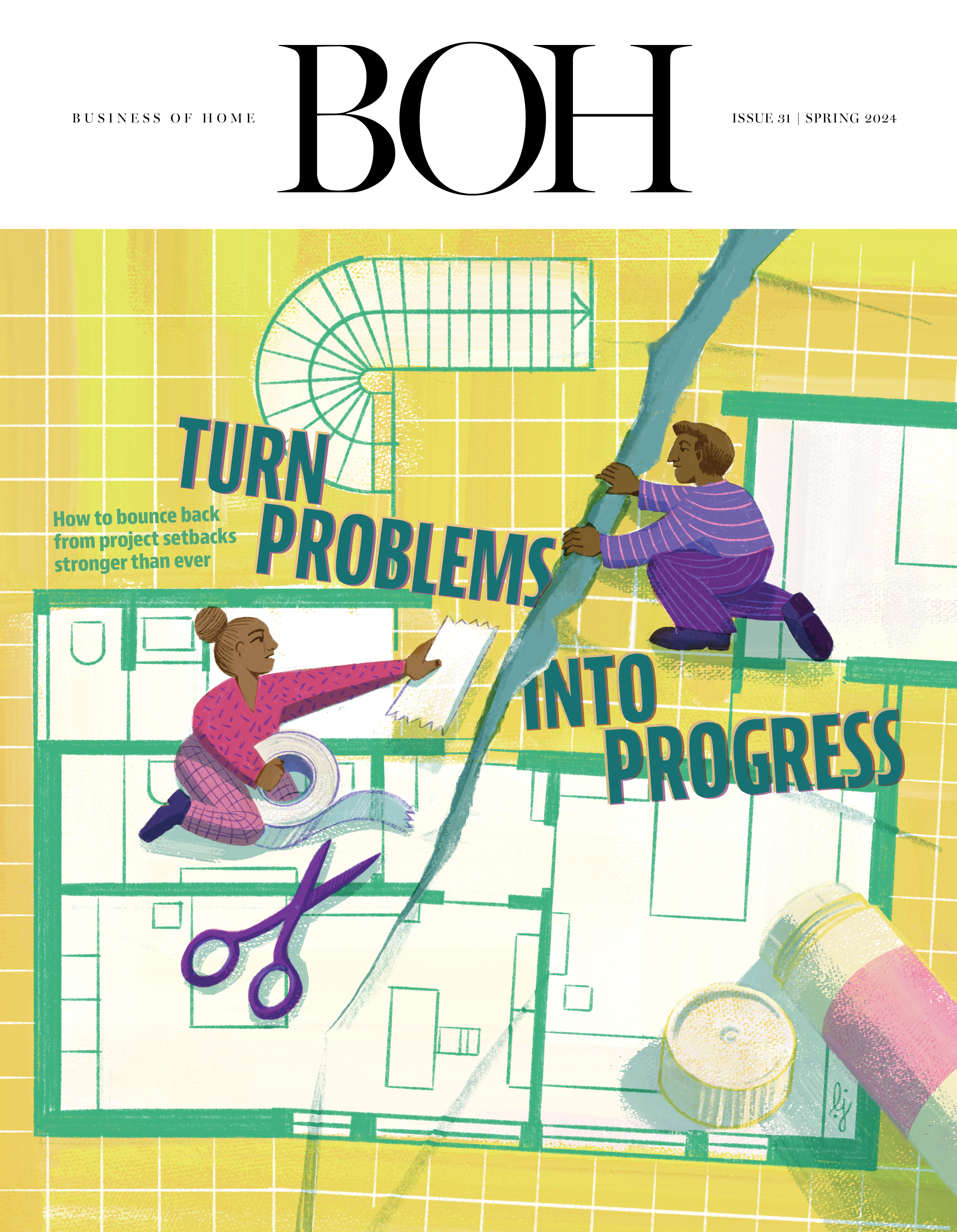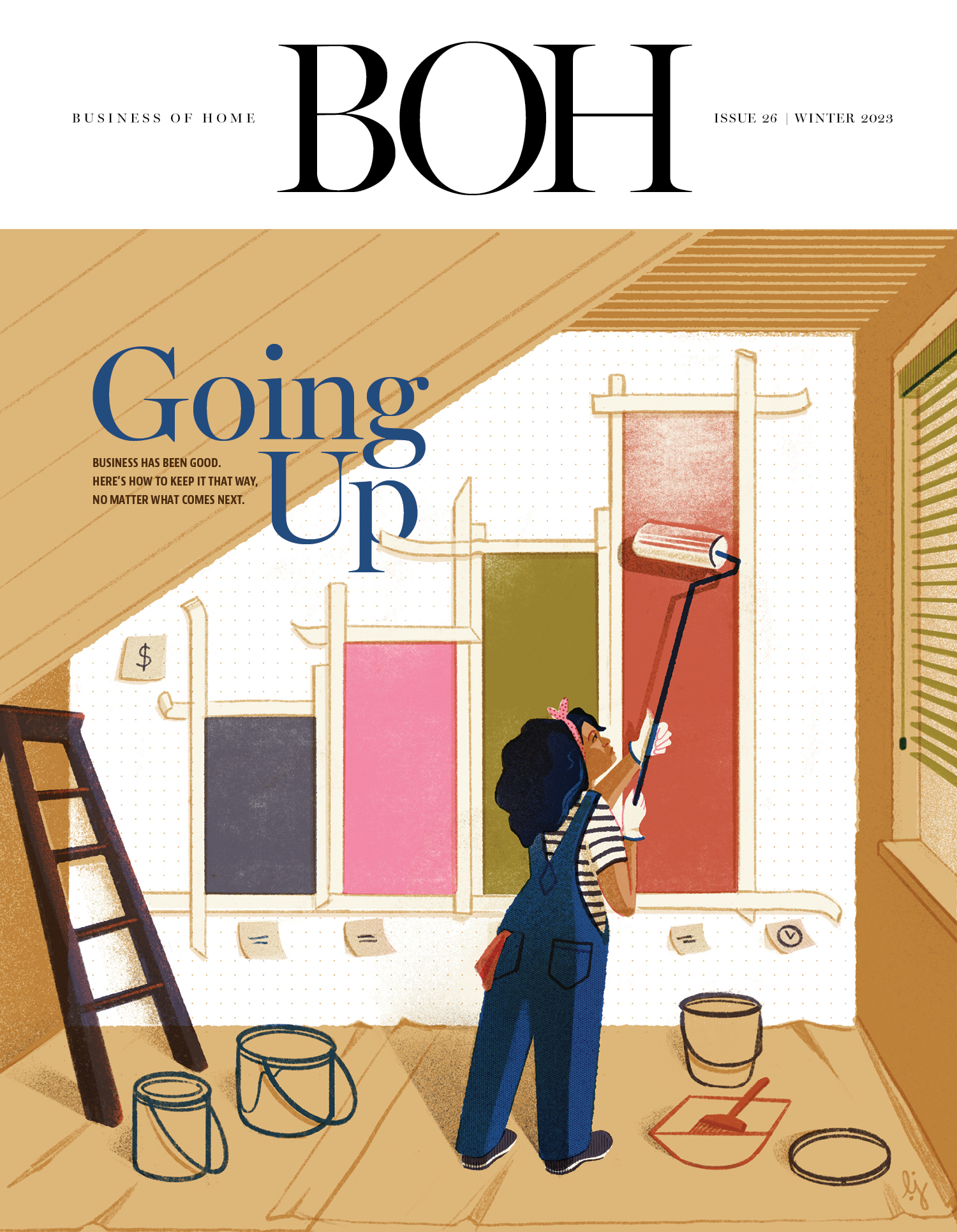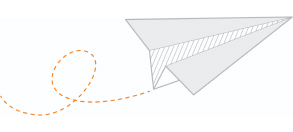If the word tariff has a numbing effect on your attention, you’re not alone. The sheer volume of tariff-related information over the past four months—from news sources, social media, vendors, neighbors and late-night pundits—has been overwhelming for all involved. There is a forgivable weariness that has settled over the design industry recently, a collective Wake me up when you know what the price is.
However you feel about them—for, against or just plain tired—tariffs remain very real. And over the past few weeks, news from the White House has spurred a new flurry of agita over trade policy. First, there was the purported deal with Vietnam to lock in tariffs at 20 percent. Then, the delay of “Liberation Day” duties until August 1. More recently: a 50 percent tariff on copper, and a threatened 30 percent on goods from the EU and Mexico.
In an attempt to get a handle on how home goods importers are reacting, Business of Home spoke to four experts: sourcing consultant Suren Gopalakrishnan of MakersPalm; BrandJump founder and e-commerce expert Josh Walter; and Tim and Bo Stump, partners and furnishings industry consultants at M&A advisory firm Stump & Company.
Which Way Is Up?
There is a wide gap between the tariffs that are announced by President Donald Trump, the headlines that follow, and the reality of what’s happening in the ports. For example, you may remember that Trump announced a 46 percent tariff on Vietnam in April, then earlier this month touted a deal to lower it to 20 percent. In fact, neither change was formally implemented, and the effective tariff rate on Vietnamese imports has not budged from 10 percent since April 2.
There’s more smoke than fire for now, but the smoke still has plenty of consequences. “I have talked to a number of companies, and there’s this sense of, ‘We don’t know when the invoice is going to reflect what,” says Walter, who describes the rapidly shifting trade policy creating something like a fog of war. Simply: Vendors are sincere in their confusion about what their own costs will look like. It follows that their pricing will be subject to change too, as long as tariffs remain an on-again, off-again affair.
Vietnam
Everyone knew tariffs on China were coming (though no one thought they’d get up to a dizzying 145 percent). The big question was Vietnam. Since Trump’s first term, manufacturers have been moving production out of China en masse and parking in Vietnam—so much so that Vietnam surpassed its northern neighbor as the largest exporter of home goods to the U.S. When the “Liberation Day” tariff rate of 46 percent was announced for the country, importers reeled. It was paused soon after, to much relief.
On July 2, however, Trump posted to social media that a new deal with Vietnam had been reached, one that would impose a 20 percent tariff on all imports. It's hard to know what to make of that number, as it has not yet been implemented, and press reports suggest that Vietnamese and U.S. officials had provisionally agreed to a much lower number (11 percent) before the president’s post. However, the 20 percent rate, if it sticks, has landed like a C+ report card with furniture importers: Could be better, could be worse.
“Plenty of people are unsurprised; almost everybody is disappointed,” says Bo Stump. “[Vietnam] was the place to go [after the first round of tariffs in 2018], and everyone got their deal going there. To go from a 10 percent tariff to a 20 percent, that’s a 100 percent increase.”
A 20 percent rate will have real effects on furniture pricing, and some companies may not survive the hit to their margins. However, it’s far from the impact of a 46 percent tariff. How you look at it may simply be a matter of perspective. Bottom line, says Tim Stump: “20 percent out of Vietnam is very painful.”
Europe
The EU is America’s biggest trading partner, and the recently threatened 30 percent tariff would have a profound effect on the home industry—especially the trade. Italy and France, in particular, are large suppliers of fabric and furniture for the upper echelons of the design business, and tariffs on those countries would cause prices to go up and businesses to consider cutbacks. The catch? Broadly speaking, many industry leaders do not think the number will actually go into effect.
“[Companies] are not as scared as they were a few months ago, before there were a bunch of reversals,” says Walter. “When the 50 tariff was threatened on the EU, I got a few panicked calls from brands. [After this latest announcement], I haven’t heard from one. They’re probably assuming there’s some sort of pump fake here.”
Indeed, while vendors remain confused about how exactly to react to tariffs, the temperature of the issue has dropped. Importers are generally operating under the assumption that the numbers will have an impact on their businesses, but not as catastrophic as once feared—and that there will be time to react. “I think things will get extended,” says Gopalakrishnan. “I think Europe will get a better deal, and some of the numbers will come down in Asia as well. … [The hard part] is that no one knows until everything is signed.”
All Eyes on the Fall
Designers have seen their vendors raise prices because of tariffs—that’s nothing new. However, the overall effect of tariffs on inflation more broadly so far has been relatively muted. There are plenty of reasons for that, ranging from the fact that the biggest numbers were never truly implemented to the fact that some overseas factories, retailers and importers have strategically taken margin hits to avoid raising prices.
Another key factor—especially in the home industry—is stockpiling. Many vendors loaded up on goods in the first quarter of the year, anticipating a significant price hike. Much of what sits in stores, showrooms and warehouses today was shipped pre-tariff and is priced accordingly. However, the consensus is that by the fall, that inventory will have largely run out, and importers who have not raised prices already will be forced to take tariffs into consideration. How consumers will react is the big question.
“September, October, that’s when we’re going to know,” says Gopalakrishnan. “Once the tariff hits, in Q3, Q4, if there’s even one month of consumer pullback, and you’re also taking a weaker margin, that’s the risk.”
Work-Arounds
There are many ways to react to tariffs. One is by simply breaking the law. Reporting shows that “trade crime” has surged in this tariff era. Some violations fall into the wide gray area around “transshipping” (exporting goods to another country before the U.S. to avoid a tariff), a hotly debated topic, especially in regard to China and Vietnam. Another tactic is splitting the cost of a good into two categories: raw materials (which are subject to tariffs) and a “creative service” (which is not). For example, a factory and importer mutually agree to lower the cost of a rug to just the fabric, then the factory charges the importer a phony add-on that is allegedly related to the design of the piece. In doing so, the bulk of the tariffs are avoided, but the factory gets its full payment.
Large companies don’t generally indulge in these kinds of risky hijinks. But for smaller players with tighter margins, the temptation is powerful. If the tariff era stretches deep into 2026, expect to hear more about “work-arounds.”





























